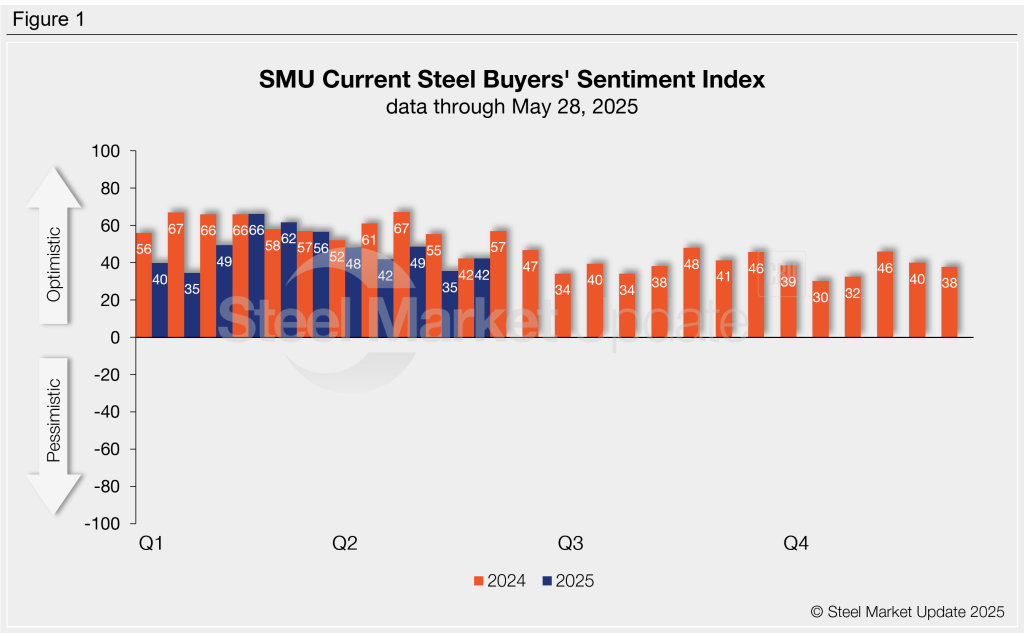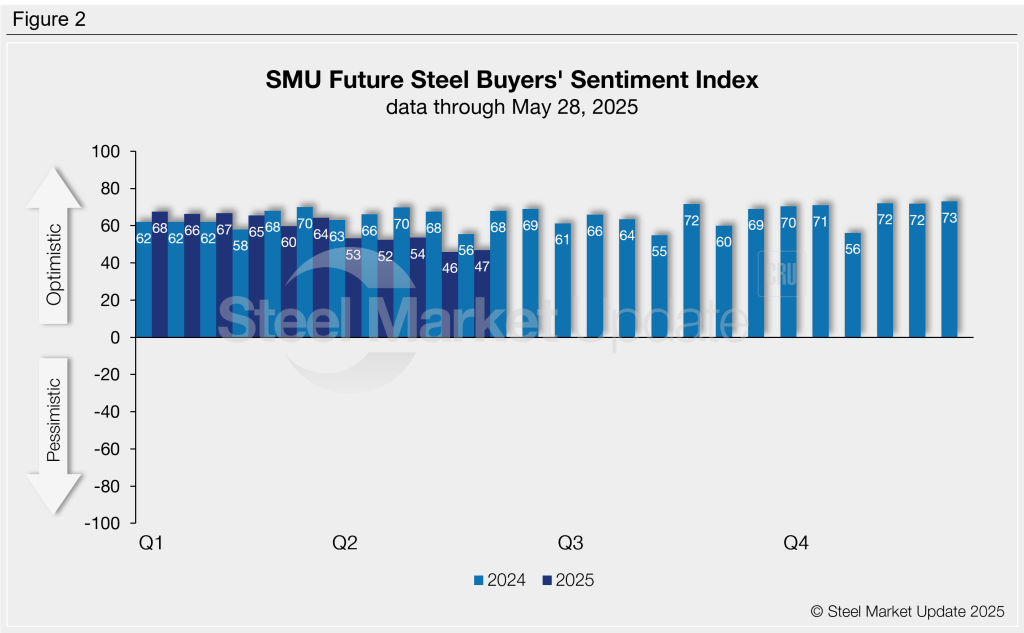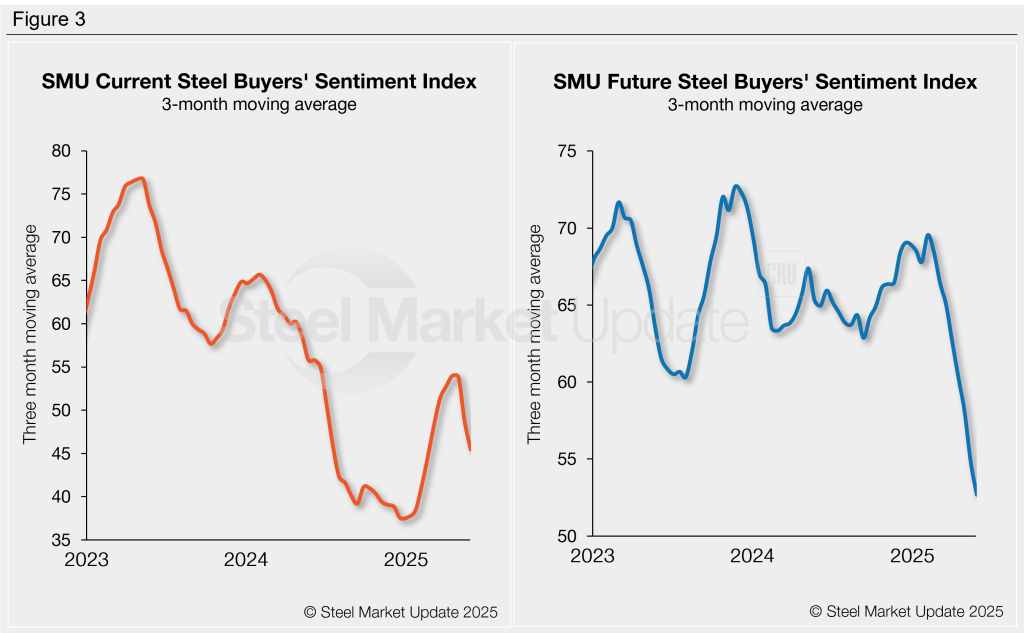Analysis

May 30, 2025
SMU Survey: Buyers’ Sentiment rises but caution remains
Written by Brett Linton
After reaching multi-month lows in mid-May, SMU’s Buyers’ Sentiment Indices modestly recovered in our latest survey. Current sentiment rebounded from mid-May’s multi-month low, while future buyers’ sentiment edged up from a multi-year low. Both indices continue to reflect optimism among steel buyers regarding their companies’ chances of current and future success, although not as strongly as they did back in February and March.
Every other week, we poll thousands of steel industry executives, asking them to rate their companies’ chances of success, measuring their sentiment today and looking three to six months from now. We use this data to calculate our Current and Future Steel Buyers’ Sentiment Indices, metrics tracked since 2008.
Current Sentiment
SMU’s Current Buyers’ Sentiment Index increased by seven points this week to +42, partially negating a 14-point reduction in mid-May (Figure 1). Sentiment two weeks ago was at one of the lowest measures so far this year. For comparison, Current Sentiment averaged +48 across 2024 and was at the same level this time last year.
Here’s what some respondents had to say about current business conditions:
“We are being careful but working harder.”
“We can do well in volatile markets.”
“We seem to buy well.”

Future Sentiment
Future Sentiment ticked up one point from mid-May’s nearly three-year low to +47 (Figure 2). Future Sentiment has generally been trending lower since peaking in late 2024, though it continues to indicate buyers have a positive future outlook. Future Sentiment averaged +65 throughout 2024 and was moderately higher at +56 one year ago.
Here’s how some buyers view the road ahead:
“If tariffs drive manufacturing up, we will thrive. If they drive it down, we will struggle.”
“Hopefully, in three to six months, we’ll have more clarity on tariffs and business, and confidence will increase.”
“Fair, if we can correct inventory.”

Sentiment trends
On a three-month moving average (3MMA) basis, both Sentiment Indices declined this week, marking the third consecutive survey in which this has occurred (Figure 3). The Current Sentiment 3MMA had previously trended upward in the first four months of the year, reaching a nine-month high. However, this week, the 3MMA fell to a three-month low of +45.45. The Future Sentiment 3MMA declined for the eighth consecutive survey, easing to +52.68, the lowest level seen since late 2020.

About the SMU Steel Buyers’ Sentiment Index
The SMU Steel Buyers Sentiment Index measures the attitude of buyers and sellers of flat-rolled steel products in North America. It is a proprietary product developed by Steel Market Update for the North American steel industry. Tracking steel buyers’ sentiment is helpful in predicting their future behavior. A link to our methodology is here. If you would like to participate in our survey, please contact us at info@steelmarketupdate.com.







